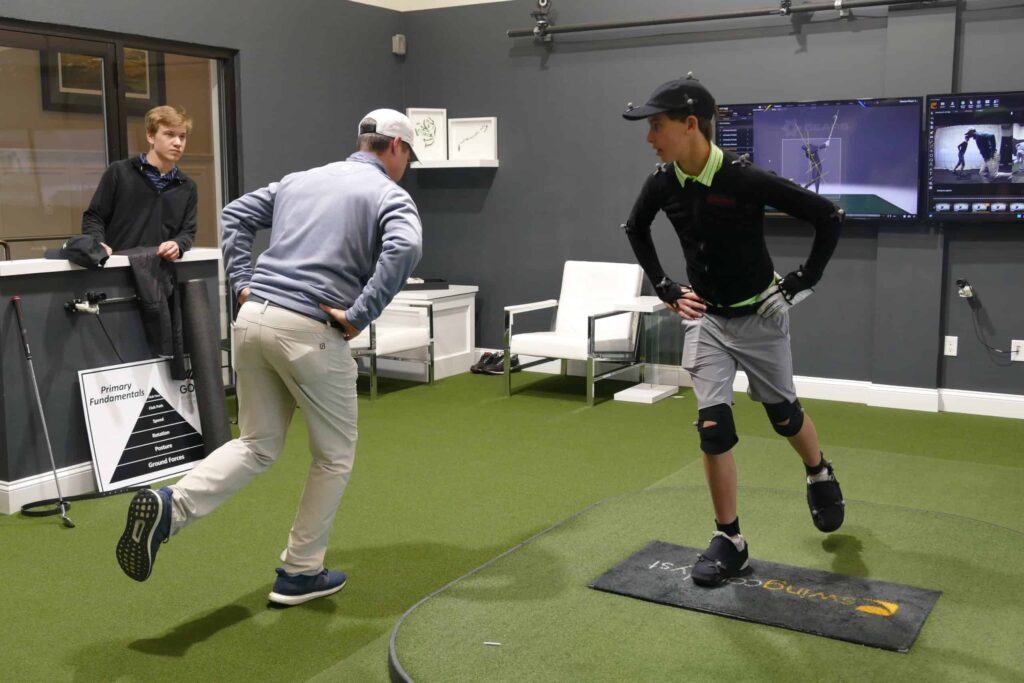I know what you’re thinking—what does rotation have to do with back pain? First, let’s define rotation. According to the dictionary, rotation is the action of turning in a circular motion around an axis or center. So, to rotate, we must turn around an axis—a straight line that serves as the pivot point.
In the golf swing, that axis is your spine and the imaginary line extending from your spine through the golf ball. When your body isn’t aligned properly—or “stacked”—this axis is disrupted, preventing your body from rotating as it’s designed to. And where does this altered rotation usually originate? You guessed it: the lower back.
Check this video out for a visual on how the muscles help me rotate around my spine: https://youtu.be/-pyfLAPOlsA
So, how do we fix this?
In the gym, of course. A screening process will reveal how your body currently rotates and what compensations it makes to hit the golf ball. Our job is to select exercises that (1) help stack your bones correctly by activating the right muscles, and (2) teach your body to rotate from this newly aligned position.
It sounds simple when you say it out loud—“I should be able to do that in a week.” Unfortunately, the body doesn’t work that way. It follows the path of least resistance and relies on ingrained motor patterns. Even if we change your posture, your body will still default to its old movement habits. That’s why learning to rotate from the new position is critical. We must load that position and pay attention to which muscles are engaged. Once you’re activating the correct muscles, you’ll need to perform many quality reps to begin rewiring your motor pattern for the golf swing.
Once your body is stacked and rotating properly, the next key is learning how to separate your upper and lower body. This means your hips start the downswing while your shoulders hold back for a moment. That brief delay creates a stretch between the two halves of your body—like winding up a spring. The result? More power, better control, and less stress on your lower back.
If your hips and shoulders move together as one stiff block, you lose that stretch and force your spine to do extra work. That’s where pain and poor swing mechanics creep in. By training your body to move the hips and shoulders independently—especially after corrective exercises—you build a swing that’s smooth, strong, and safe. Specific drills that teach this separation are essential for long-term performance and injury prevention.
How do you change the motor pattern in your golf swing?
By performing the right drills immediately after your corrective exercises in what we call a “Cycle.” This involves doing your correctives in the prescribed order, followed by technical work and swing drills. We typically recommend 3–5 sets of this sequence.
Here’s an example of a Cycle:
- Foam roll or use a lacrosse ball on tight areas
- Perform one set of corrective exercises
- Golf drills: Focus on sensing the correct positions using the space gained from the correctives
- Hit 5–10 golf balls, applying the sensations from your drills toward a target
Depending on how many sets you do, this cycle could take one to two hours. But this is where real change happens. If you skip the correctives and jump straight into swing drills, you’re trying to improve your swing without first preparing your body to accept those changes. That’s where most golfers go wrong. Sure, you can tweak your grip, stance, or posture and see short-term improvement—but those changes won’t last. You’re just layering more compensations onto your body, which inevitably leads to the lower back pain we discussed earlier.
If you’re looking for some great exercises to help retrain your body’s rotation, come find us in the Performance Zone, but keep in mind: these are only effective after completing your personalized corrective work. If your body isn’t properly stacked—head over ribcage, over pelvis, over ankle over feet—these exercises won’t help. Your body will revert to its old motor patterns. It is pivotal that you work with a coach to make sure you are doing them properly!
This brings me back to my earlier articles: if you’re dealing with pain or persistent tension, it’s essential to get screened. Understanding the root cause allows us to build a targeted plan that helps you move better—and ultimately swing the golf club better.


